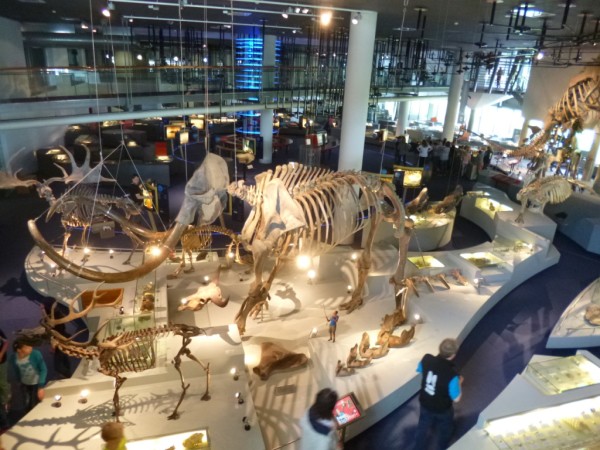A visitor to your average art exhibition might be forgiven for thinking so.
A couple of weeks ago, while I was in Brisbane, I spent an afternoon taking in the Matisse: Drawing Life exhibition at GoMA. As regular readers would know, it was not my first visit to GoMA and given I’m a bit of a Matisse fan (albeit a lay fan, not one with an MA in Art History!), it was something I was looking forward to.
And before I create the wrong impression, I should say that I was definitely not disappointed by what I saw. There was an impressive collection of drawings, woodcuts, etching and collages spread over a significant portion of GoMA’s ground floor. (Unfortunately I was not permitted to take photos of the works to help jog my memory of specific works, but I suspect this was beyond GoMA’s control and part and parcel of hosting an exhibition of this type.)
I probably spent at least an hour and a half in the exhibition – long enough that I didn’t really get much of a chance to experiment in the interactive drawing room at the exhibition’s exit (by this stage it was nearing closing time). However I left feeling that my $16 entry (student concession – a rare perk of the PhD student!) was money well-spent.

But even so, I think there were some missed opportunities with the overall interpretation of the works. It appeared to me that the main exhibition text was directed at experts and art historians, whereas the real nuggets were either relegated to the “For Kids” text or the virtual tour comprising short video clips accessible via QR code. (These clips were very good by the way – I particularly enjoyed the ones made in conjunction with Griffith University / Queensland College of Art that showed how etchings and such like are made (see here). However, as far as I could tell, I was the only person using the QR codes. I wonder how well they are used?)
The “For Kids” text was written in an informal style, often using the second person and active language. It was broken up into short paragraphs, making it easy on the eye. It pointed out features of the works that you may have missed. And while it was ostensibly “for kids”, in some cases it was the only place where a knowledge of art history was not automatically assumed. As an example, there was a whole room of works that we were told were from Matisse’s ‘odalisque’ period. (Obvious, huh?) While from the context you could more or less figure out what it meant, it was only in the kids’ text that it was explained that ‘odalisque’ is a word for a female nude posed indoors, and is derived from the Turkish word ‘odalik’. So I learned something new. To me that’s not kids’ text, that’s interpretation – and it works for all ages!
As a case in point, here is a comparison of the different interpretations of a work commissioned by the Barnes Foundation – in main text, kids text, and the QR clip (with apologies for the shocking quality of the photos – I hope you get the idea).


I found the kids text far more enlightening about what I was actually looking at, and you have to see the video clip to get the kicker – initially, the work was accidentally made to the wrong scale!
I note from the website that the exhibition was curated by a French curatorial team, so it is likely that the exhibition text is from them as well (although the QR clips are obviously a GoMA production; the source of the kids text is not obvious but I’m guessing that’s GoMA’s too). So it’s possible that there is something lost in the translation, however my (limited) experience of French museums is that exhibition text generally assumes far more knowledge than is usual in the Anglosphere (even topics I know well have had labels that sailed straight over my head). I’m not sure if this represents a real difference in what the average Parisian on the street knows, or just different curatorial attitudes to what people *should* know.
Despite these points that are specific to this particular exhibition, I would argue that art exhibitions in general have more formal and less visitor-focused labels. Perhaps this is because other kinds of museums (particularly natural history) are more consciously focused on a family audience (art museums seemingly have no qualms about being mainly for ‘grown ups’). Or perhaps I’m betraying my relative ignorance of art relative to the sciences (but then again, wouldn’t the typical visitor lack specialist subject knowledge too)?
I just hope it’s not because clear, conversational and accessible text is somehow seen as a “kids’ thing”.


![IMG_0163[1]](http://reganforrest.com/wp-content/uploads/2011/08/IMG_01631-e1314513814956.jpg)
![IMG_0165[1]](http://reganforrest.com/wp-content/uploads/2011/08/IMG_01651-e1314513978505.jpg)





























